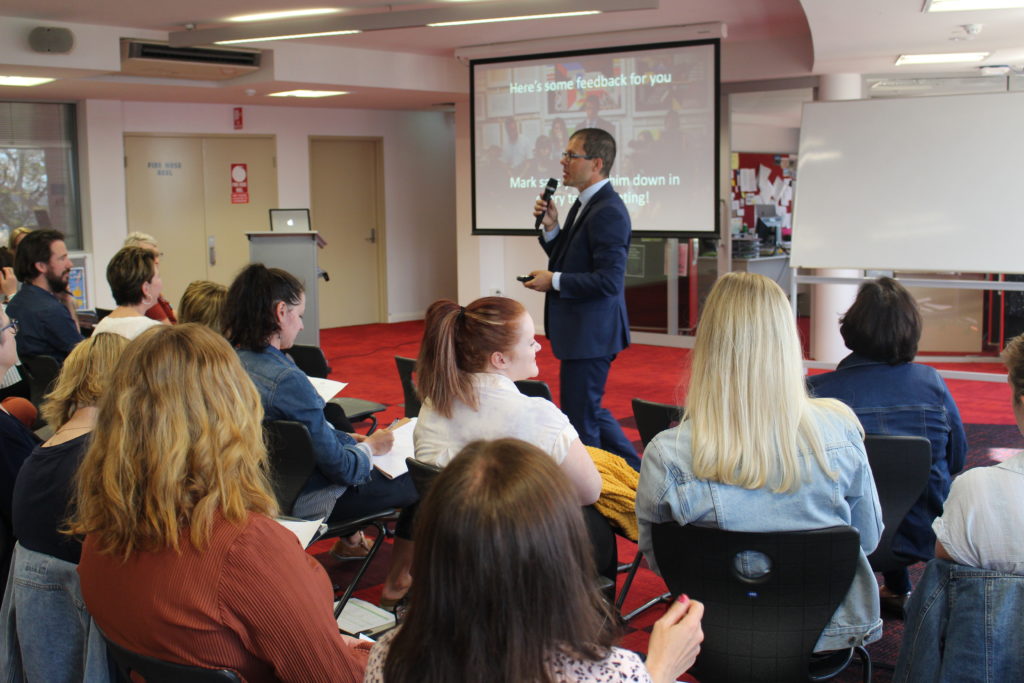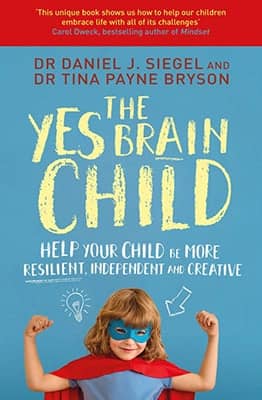Why Give Feedback? – Jennifer Oaten

As a sports coach, many of us have stood on the sidelines, observing the movement and actions of the players. When we see a player doing something that can be improved, we would take them aside and offer feedback to help them improve their performance. The coach sees things, players on the field can’t see.
Offering effective feedback is a skill. Like all skills, this skill can be learned and continuously improved. This week our staff were involved in a “Feeding Forward” workshop facilitated by Daniel Groenwald. The focus was on developing feedback skills to help us move forward and to grow as professionals, but also to enable us to provide useful feedback to our students.

The term feedback can be used to describe information about our actions or behaviours provided by others that may help us adjust and improve our future actions and behaviour. Feedback can be considered as the bridge between current performance and a desired future performance and helps us understand the gap between our intention and our impact.
Giving positive feedback to others is something many of us do often and well. Yet constructive feedback that enables others to understand their areas of growth is much more challenging to deliver to work colleagues, family members or even our own children.
To feel safe in sharing feedback, individuals need to have developed strong relationships that enable honest conversations. A ratio of six positive points of feedback to every one constructive feedback is recommended.
In his presentation, Daniel provided the following models and advice…
A model for providing feedback
Providing feedback can be daunting and we want it to be received in a way that promotes growth without compromising relationships. For this reason, Daniel outlined a model for offering feedback:
- “Can I catch you for a minute to talk about….”
- “In the last meeting you…”
- “I’m not sure it was your intention, but I felt…”
- “Can I ask that…?”
- “How do you see it?”
A model for responding to feedback
The way we respond to feedback is equally important. Acknowledge the impact of your words and/or actions, articulate what your intention was and then work towards repair. For example:
- “Thanks for raising this issue.”
- “Thank you for the feedback.”
- “I’m sorry it’s had this impact.”
- “I had no idea you felt that way.”
- “I know we can work on a solution.”
- “I will do…”
When should I take feedback on board?
Not all feedback needs to be taken on board. However, it should be at least considered if:
- There is a recurring theme (you’ve heard the feedback before)
- The intention of the person giving the feedback is positive
- The feedback will make you more effective or help you to grow
- The feedback triggers something within you, indicating you already have a level of awareness
Often we are reluctant to give feedback because it may be uncomfortable, we are often unsure how to articulate what needs to be said, or it is easier to say nothing. We may also be concerned we will offend the person, yet in many cases, they are in fact grateful for your honesty. Sometimes we need to sit with discomfort but also decide whether it is worth having the conversation and the costs versus the benefits.
Daniel says, “As humans, we spend a lot of time flying blind in our own lives. Feedback is like a GPS; it keeps us pointed in the right direction.”
I challenge anyone reading this blog to take the above advice and have a feedback conversation with someone whom you could help to grow.

The Power of Expectations in Shaping Student Success – Jennifer Oaten
Discover the transformative impact of expectations on student success. Learn how belief shapes outcomes in education and beyond.

Weekly Wrap Up: Term 2, Week 1, 2024
Term 2 has kicked off with a bang! We enjoyed the Year 11 Father-Daughter evening, celebrated Earth Day, and welcomed Dr. Mark Williams.

Inspiring Change: Earth Day 2024
Our Earth Day celebration this week was a powerful reminder of our collective responsibility to protect our planet for future generations.
- Featured
Author: Santa Maria College
Santa Maria College is a vibrant girls school with a growing local presence and reputation. Our Mission is to educate young Mercy women who act with courage and compassion to enrich our world. Santa Maria College is located in Attadale in Western Australia, 16 km from the Perth CBD. We offer a Catholic education for girls in Years 5 – 12 and have 1300 students, including 152 boarders.






